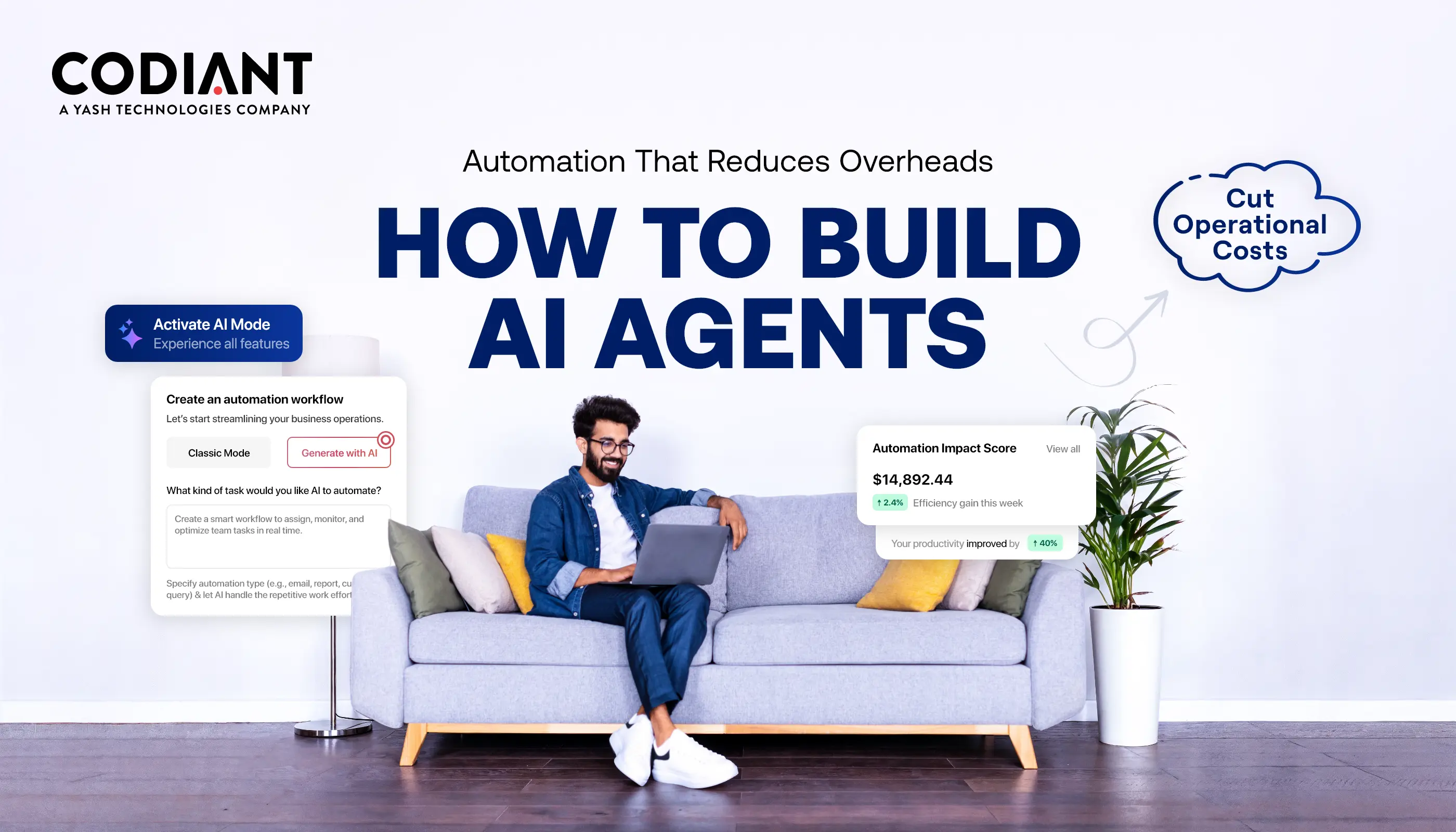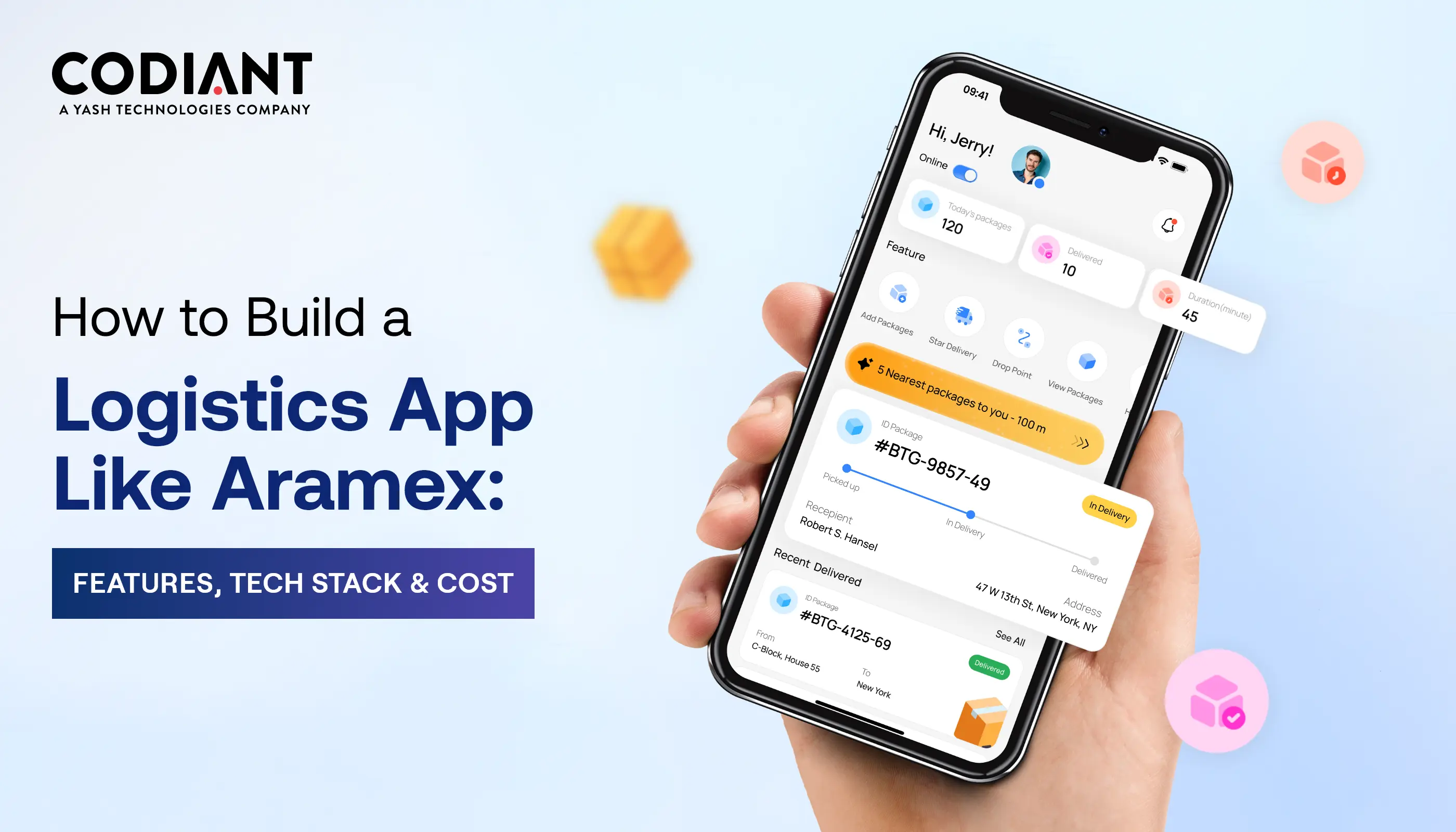How an On-Demand Home Services App Increased Bookings by 40%
Table of Contents
Subscribe To Our Newsletter
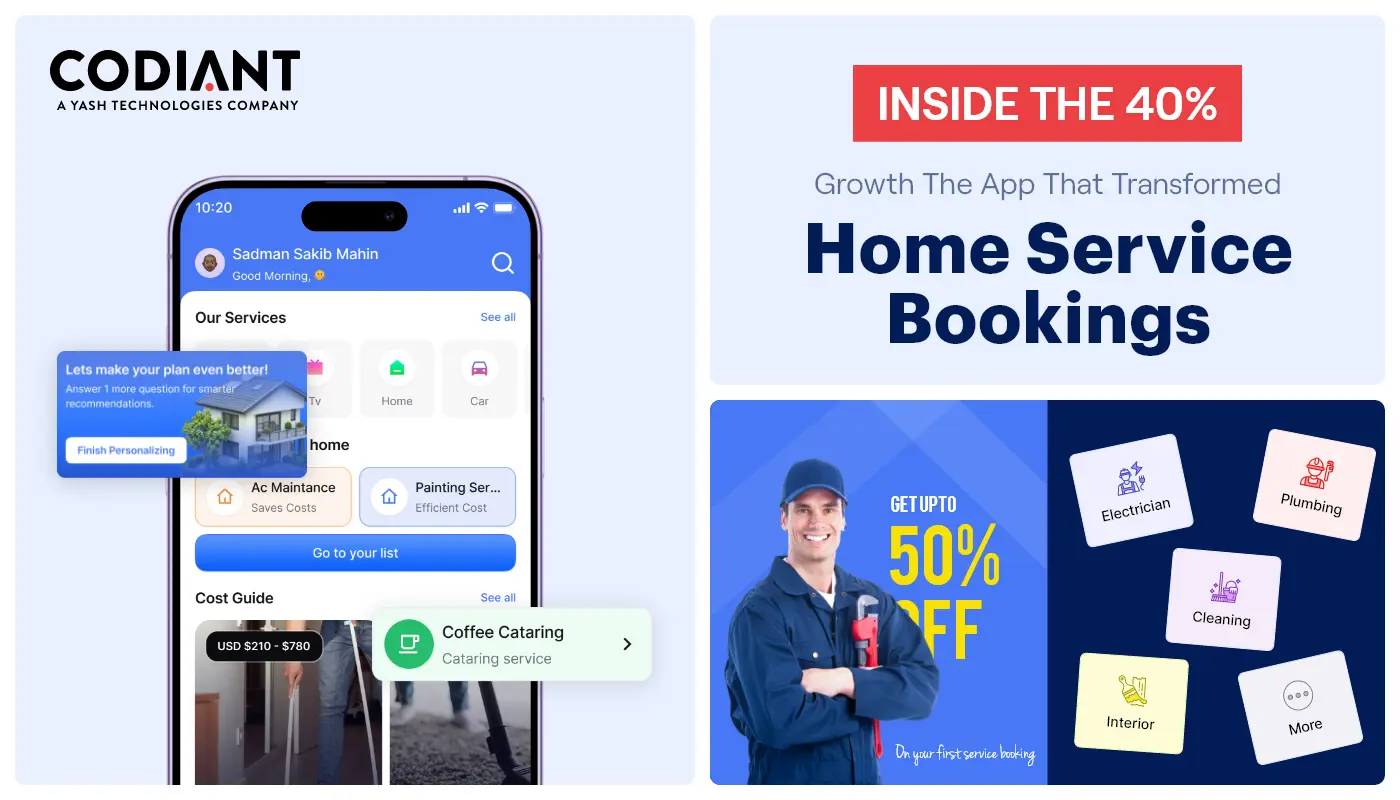
Home services could afford to be slow but not anymore! Customers now expect to tap a button, book in seconds, and get updates without having to chase anyone. They want reassurance now, not hours later.
But behind the scenes? You’re still juggling manual dispatch, answering endless phone calls, and scrambling to follow up. It’s exhausting. And deep down, you know this system isn’t just outdated. It’s holding your business back. You’re losing time, losing jobs, and slowly losing trust. But knowing it and fixing it? That’s the hard part.
As one home service business owner shared with us “We weren’t losing to the competition—we were losing time, money, and trust because we couldn’t keep up.”
That pain is real. But the fix? It’s already here and it’s changing everything.
On-demand home service apps are helping businesses take back control. From AI-based job scheduling to mobile-first booking experiences, these platforms don’t just add convenience. They help you run leaner, scale faster, and finally see what’s happening in the field. For service professionals ready to modernize, it’s not just a tech upgrade but a business breakthrough. And it’s happening fast.
In this blog, we’ll walk you through what it really takes to build a home service app, break down the ROI, and show you how one mid-sized home service company increased bookings by 40% in just six months with the right strategy.
The Rise of On-Demand Home Services Apps
The $500B+ home services industry is experiencing a structural reset. For service providers, regional workers, and franchise systems, this shift builds two clear paths. Either continue working on fragmented tools and outdated processes, or plan to investing in a bespoke platform that supports automated scheduling, real-time notifications, and unified payments. The latter improves user experience, gives more operational control and repeatable revenue.
What Is an On-Demand Home Services App?
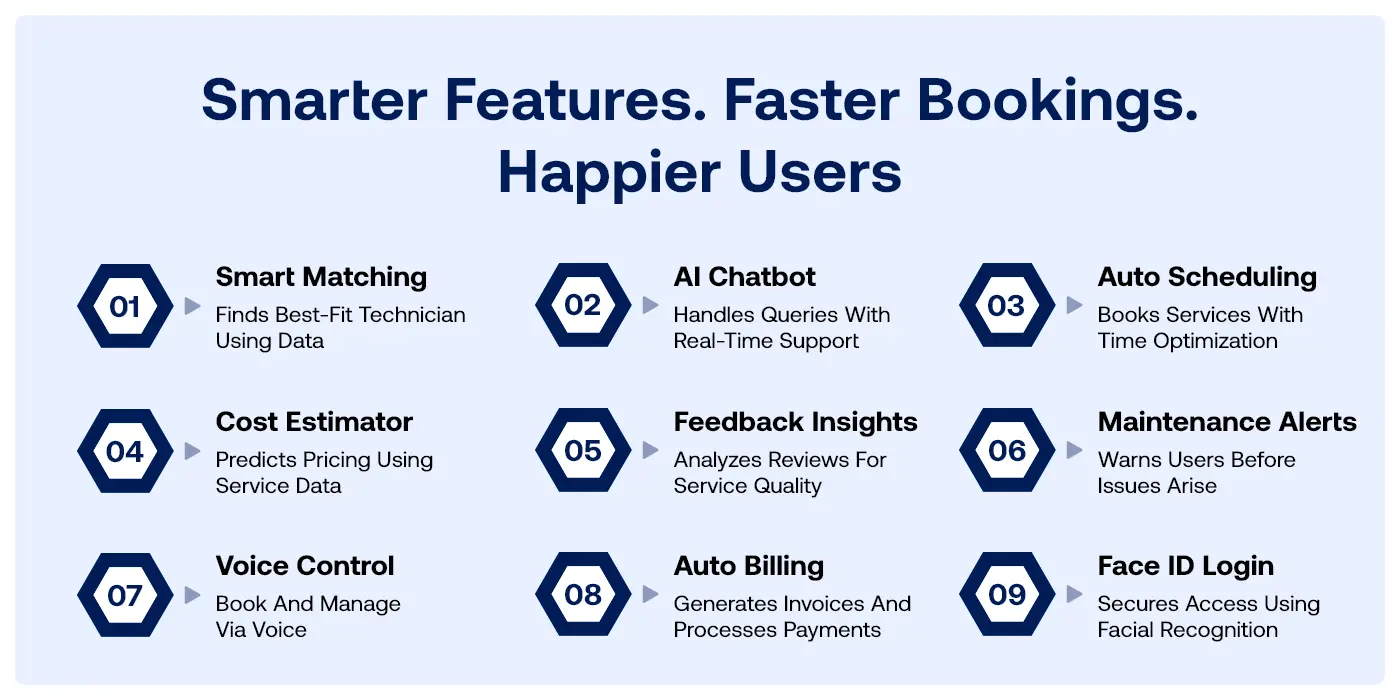
An on-demand home services app is a reliable digital platform that helps managing household chores. It allows users to quickly connect with local professionals such as cleaners, handymen, or pest control experts within seconds. They don’t need to flip through directories or chasing referrals for consulting these experts.
With the right on-demand home service app, businesses can:
- Let customers discover, book, and pay for services in seconds.
- Assign jobs based on technician availability and proximity.
- Monitor service delivery, delays, and completion in real time.
- Collect actionable feedback and performance ratings automatically.
It’s not just an app, it’s a full-stack service operations ecosystem designed for growth, scalability, and customer retention.
Read Here: Top 10 best on-demand home service app
Post-COVID: A Behavior Shift That’s Here to Stay
The pandemic dramatically shifted consumer behavior. According to a PwC report, 52% of consumers adopted more digital habits during the pandemic and 89% say they plan to continue. For home services, that translated into a spike in digital bookings, remote consultations, and cashless transactions.
Startups and traditional service providers alike began investing in digital platforms to stay competitive. The demand for mobile app for home services development spiked as businesses recognized that users now prefer digital-first interactions—even for something as offline as fixing a clogged sink.
Capitalize on the $500B On-Demand Home Services Industry, Before Competitors Do!
Apps offering real-time bookings and cashless convenience are seeing up to 4X higher engagement and 70% customer retention.
At Codiant, we help service providers, aggregators, and startups build scalable home services platforms that boost operational efficiency.
Why Home Service App Development Is Booming
With the growing demand of mobile use, home service apps are now considered a necessity when growing your business. Now, service providers are using the tools to help them manage their teams better, retain customers and increase revenue. Even with automation and real-time data, such apps reduce errors and offer a business owner a sense of how things are working all around the business.
Business Benefits: Beyond Just an App
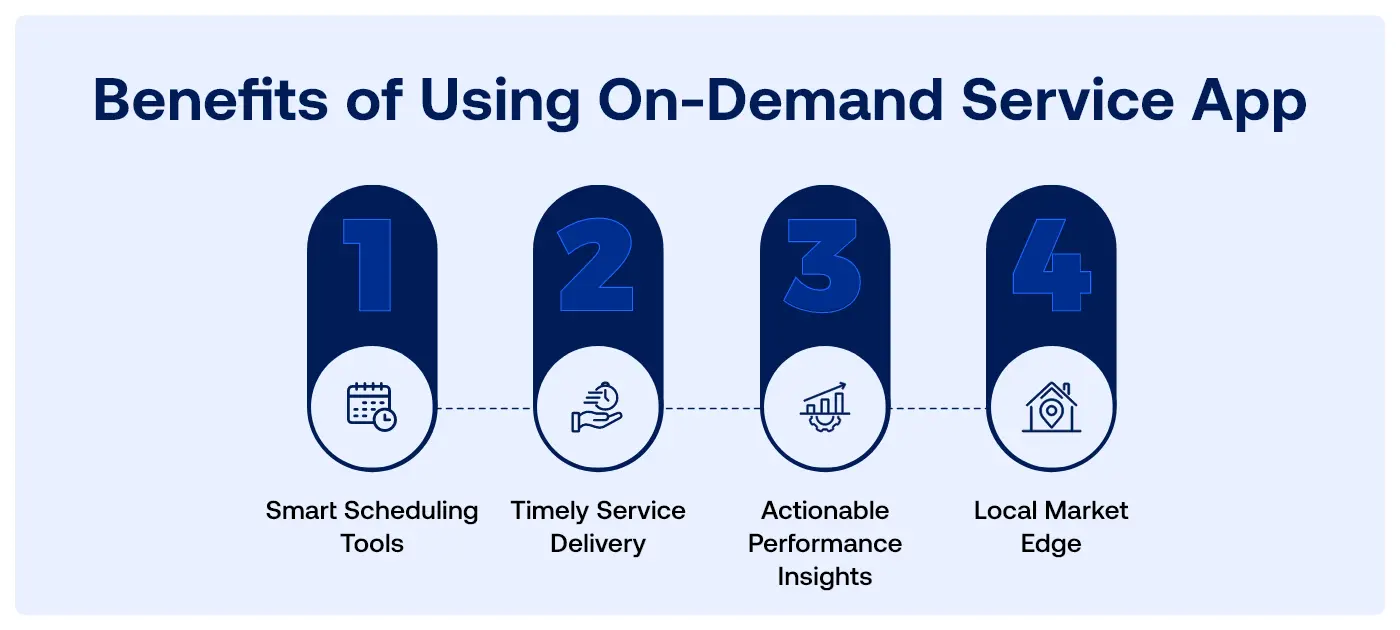
Investing in a home maintenance booking app isn’t just about staying current, it’s about staying competitive. Let’s break down the core advantages:
-
Easy Operations & Scheduling
A centralized dashboard reduces double bookings and optimizes technician schedules. Admins can assign jobs, monitor routes, and manage peak-hour requests—all in real time.
-
Lower Cancellation & More Time Management
Automated reminders, ETA tracking, and live updates keep everyone on time—for your customers and your technicians. After switching to automated notifications, businesses saw a decrease in cancellations of 22%.
-
Data-Driven Analytics & Customer Feedback
The built-in analytics provides businesses with a birds-eye view of performance metrics: highest performing technicians, quality of service, most used services, and customer churn trends. Insights result in better decision making and smarter marketing campaigns.
-
Competitive Advantage in Local Markets
Local businesses often have a difficult time getting noticed. A customization branded app for home services is a strong, real-time gateway to visibility and trust-enhanced image as the app is perceived as a symbol of seriousness and being up-to-date.
“The best apps aren’t just platforms. They’re data engines.” – Satya Nadella, CEO, Microsoft
Read more: How HVAC Companies in USA Use Chatbots and AI to Improve Customer Service?
Case Study: How Our App Boosted Bookings by 40%
The Client
A mid-sized HVAC and plumbing company operating across four U.S. states approached us at Codiant. Their challenge? Despite having loyal customers, they were still relying on outdated phone bookings and manual dispatch. No-shows, inefficient routing, and missed revenue were common.
The Strategy
We developed a full-fledged on-demand home services app with the following capabilities:
- AI-powered scheduling as per technician availability and zip code
- Push notifications to reduce no-shows
- Built-in wallet for promotional offers
- Smart routing for reduced fuel and travel time
- Post-service feedback loop and review system
The Results
Within six months of launch:
- Bookings surged by 40%
- Missed appointments dropped by 31%
- The average service rating increased from 3.8 to 4.6
- Over 60% of users booked repeat services via the app
This Could Be Your 40% Growth Story
At Codiant, we turn underperforming operations into high-converting digital machines. If you’re still relying on calls and chaos, it’s time to level up.
From AI scheduling to real-time feedback loops, we build home service apps that drive revenue not just convenience. Let’s unlock your next 10x growth.
What to Know While Planning Home Service App Development
Thinking about building your own on-demand home services app? Here’s what business owners and tech teams need to align on:
-
Define Core Modules
Start with these essentials:
- User Panel (booking, reviews, payments)
- Service Provider Panel (job management, availability)
- Admin Panel (dispatch, analytics, ratings)
From there, you can add advanced features like AI chatbots, heatmaps, and AI-based demand forecasting.
-
Prioritize UI/UX
The on-demand home service app is being used by people during stressful situations (a leaking pipe, broken AC). It’s a great idea to keep simple navigation, short contact forms for the right approach without delay.
-
Start Small, Scale Fast
Don’t try to build an all-in-one app on Day 1. Start with a focused MVP. For example: HVAC only on an initial base and then, expand once you validate product-market fit.
-
Tech Stack Matters
Choosing the right tech stack is important. Check the table mentioned below and understand what technologies can be used to create such home service applications.
| Component | Technologies | Purpose/Benefit |
| Frontend | Flutter or React Native | Cross-platform development with native performance |
| Backend | Node.js + Express, or Django | Fast, scalable server-side logic and APIs |
| Database | PostgreSQL + Redis cache | Reliable storage with fast data retrieval |
| Cloud | AWS or Azure | Secure, scalable hosting and deployment |
| APIs | Stripe, Firebase, Twilio, Google Maps, Segment | Payments, notifications, auth, tracking, and analytics |
The Future of Home Services Starts Here
The story of one on-demand app success story increasing bookings by 40% is not just a headline, it’s a real example of digital empowerment. As digital demand continues to rise and traditional service models decline, having a custom service mobile app development strategy in place is no longer optional. It’s essential.
We’ve seen businesses of all sizes including HVAC providers, cleaning companies, appliance repair services, use technology to:
- Increase revenue by 25–45%
- Reduce customer churn by 20%
- Improve service turnaround times by 30%
And more importantly, they future-proofed their operations in an industry that’s only getting more competitive. The Codiant is the one of the reliable mobile app development in USA dedicated to deliver the best technology service to the emerging business & leaders.
Read more: 5 Proven Steps to Scale Your HVAC Business
Conclusion
The digital-first customer isn’t coming. They’re already here—and they’re booking services from competitors who’ve already gone mobile.
Step into the future of convenience with an on-demand home services app designed to scale effortlessly and deliver exceptional performance. With the rise of AI-driven home services, businesses can streamline operations, enhance customer satisfaction, and achieve growth beyond what traditional systems could offer. The right technology stack, strategic partner, and user-focused design can transform everyday service delivery into a seamless digital experience.
Frequently Asked Questions
It’s a mobile app that makes it easier to find and book local professionals, from electricians and plumbers to cleaners. The app offers a frictionless way to book your services, make safe and convenient payments, receive updates and leave your review – all in one place.
A variety of home service-related business could reap rewards, including heating and cooling workers, cleaning services, plumbers, landscaping companies, pest control and appliance repair. Not only that, these apps help better manage bookings, enhance the customer experience, and expand business digitally.
A full app generally takes around 3 to 6 months to develop. The timing will vary depending on how complex your features are, how much you want to customize your design, and which third-party services you want to integrate.
Begin with the essentials: customer sign-up, service catalogue, reservations, alerts, technician management. Keep the user experience as easy as possible. You can incorporate features like payments and a wallet later, as your app builds.
Yes, you can. Your app can be made more efficient through new AI features such as, smart scheduling, route optimization, and demand forecasting. These are the little automation touches that can make a difference in reducing no shows and other productivity killers for your service team.
Featured Blogs
Read our thoughts and insights on the latest tech and business trends
Learn How to Build AI Agents That Can Speed Up Your Work and Reduce Other Expenses
- November 10, 2025
- Artificial Intelligence
Businesses today are looking for faster ways to work and smarter tools that cut costs. That’s why AI agents are quickly becoming a key investment for companies of all sizes. These autonomous systems can perform... Read more
How to Build a Logistics and Transportation App Like Aramex?
- November 6, 2025
- Logistics & Transportation
In a Nutshell: A logistics app like Aramex helps businesses manage deliveries, track shipments, and serve customers better. Technology is now needed in logistics because customers want fast delivery and real-time tracking. A logistics app... Read more
How to Modernize Legacy Systems with AI – A Step-by-Step Guide
- October 31, 2025
- Artificial Intelligence
In a Nutshell: Legacy systems aren’t outdated - they’re underutilized. AI can modernize them without full replacement, saving time and cost. Modernization is a journey, not a rebuild. Start small with automation, data clean-up &... Read more

